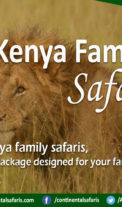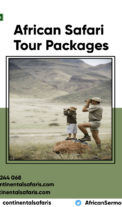Tanzania budget safari adventure
4 DAYS LAKE MANYARA | NGORONGORO | TARANGIRE SAFARI
Departs daily at 9.30am
Day 01: ARUSHA | LAKE MANYARA
Depart Arusha in the morning for Lake Manyara, arrive by lunch time. Afternoon game drive. Dinner and overnight at campsite, L,D.
Day 02: LAKE MANYARA | NGORONGORO
After early breakfast depart for Ngorongoro crater, arriving in time for lunch. Afternoon game drive on the floor of the crater. Dinner and overnight at campsite, B,L,D.
Day 03: NGORONGORO | TARANGIRE
After breakfast drive to Tarangire. Afternoon game drive in search of wildlife, meals and overnight at our campsite, B,L,D.
Day 04: TARANGIRE | ARUSHA
After breakfast enjoy a morning game viewing drive in the Tarangire National Park. Return to Arusha, B.
Camping safari tour price: US$ 880 per person sharing
The above prices are inclusive of:
-Guarantee price/guarantee safari on confirmation
-All ground transport whilst on safari in a comfortable safari land cruiser
-Full board accommodation whilst on safari
-Meal plan as described, B=Breakfast, L=Lunch and D=Dinner
-Accommodation in 2 person tents
-All park entrance fees to include government taxes
-Service of an English speaking professional driver/guide and skilled cook
-All game drives as detailed in the itinerary
-Ngorongoro crater tour
-Bottled mineral water whilst on safari
-Camping gear to include tents and sleeping mats
Excluded:
-Accommodation before and after the tour
-Airport transfers, US$ 75 per vehicle one way
-Tips
-Laundry
-Sleeping bags
-Drinks
-International flights
-Visas
-Items of personal nature
-Any other extras not detailed in the above itinerary
4 days Tanzania Camping, Tarangire budget tour, Camping Safari Lake Manyara, Camping Ngorongoro Budget holiday Camping Safari, Tanzania
Ngorongoro Crater Conservation Area:
The Ngorongoro Crater is often called ‘Africa’s Eden’ and the ‘8th Natural Wonder of the World,’ a visit to the crater is a main drawcard for tourists coming to Tanzania and a definite world-class attraction. Within the crater rim, large herds of zebra and wildebeest graze nearby while sleeping lions laze in the sun. At dawn, the endangered black rhino returns to the thick cover of the crater forests after grazing on dew-laden grass in the morning mist. Just outside the crater’s ridge, tall Masaai herd their cattle and goats over green pastures through the highland slopes, living alongside the wildlife as they have for centuries.
Ngorongoro Conservation Area includes its eponymous famous crater, Olduvai Gorge, and huge expanses of highland plains, scrub bush, and forests that cover approximately 8300 square kilometres. A protected area, only indigenous tribes such as the Masaai are allowed to live within its borders. Lake Ndutu and Masek, both alkaline soda lakes are home to rich game populations, as well as a series of peaks and volcanoes and make the Conservation Area a unique and beautiful landscape. Of course, the crater itself, actually a type of collapsed volcano called a caldera, is the main attraction. Accommodation is located on its ridges and after a beautiful descent down the crater rim, passing lush rain forest and thick vegetation, the flora opens to grassy plains throughout the crater floor. The game viewing is truly incredible, and the topography and views of the surrounding Crater Highlands out of this world.
This truly magical place is home to Olduvai Gorge, where the Leakeys discovered the hominoid remains of a 1.8 million year old skeleton of Australopithecus boisei, one of the distinct links of the human evolutionary chain. In a small canyon just north of the crater, the Leakeys and their team of international archaeologists unearthed the ruins of at least three distinct hominoid species, and also came upon a complete series of hominoid footprints estimated to be over 3.7 million years old. Evacuated fossils show that the area is one of the oldest sites of hominoid habitation in the world.
The Ngorongoro Crater and the Ngorongoro Conservation Area are without a doubt some of the most beautiful parts of Tanzania, steeped in history and teeming with wildlife. Besides vehicle safaris to Ngorongoro Crater, Olduvai Gorge, and surrounding attractions, hiking treks through the Ngorongoro Conservation Area are becoming increasingly popular options. Either way you choose to visit, the Crater Highlands are an unforgettable part of the Tanzanian experience.
Tarangire National Park:
Tarangire National Park has some of the highest population density of elephants anywhere in Tanzania, and its sparse vegetation, strewn with baobab and acacia trees, makes it a beautiful and special location. Located just a few hours drive from the town of Arusha, Tarangire is a popular stop for safaris travelling through the northern circuit on their way to Ngorongoro and the Serengeti. The park extends into two game controlled areas and the wildlife are allowed to move freely throughout.
Before the rains, droves of gazelle, wildebeest, zebra, and giraffes migrate to Tarangire National Park’s scrub plains where the last grazing land still remains. Tarangire offers unparalleled game viewing, and during the dry season elephants abound. Families of the pachyderms play around the ancient trunks of baobab trees and strip acacia bark from the thorn trees for their afternoon meal. Breathtaking views of the Masaai Steppe and the mountains to the south make a stop at Tarangire a memorable experience.
Lake Manyara National Park
Located beneath the cliffs of the Manyara Escarpment, on the edge of the Rift Valley, Lake Manyara National Park offers varied ecosystems, incredible bird life, and breathtaking views. Located on the way to Ngorongoro Crater and the Serengeti, Lake Manyara National Park is well worth a stop in its own right. Its ground water forests, bush plains, baobob strewn cliffs, and algae-streaked hot springs offer incredible ecological variety in a small area, rich in wildlife and incredible numbers of birds.
The alkaline soda of Lake Manyara is home to an incredible array of bird life that thrives on its brackish waters. Pink flamingo stoop and graze by the thousands, colourful specks against the grey minerals of the lake shore. Yellow-billed storks swoop and corkscrew on thermal winds rising up from the escarpment, and herons flap their wings against the sun-drenched sky. Even reluctant bird-watchers will find something to watch and marvel at within the national park.
Lake Manyara’s famous tree-climbing lions are another reason to pay this park a visit. The only kind of their species in the world, they make the ancient mahogany and elegant acacias their home during the rainy season, and are a well-known but rather rare feature of the northern park. In addition to the lions, the national park is also home to the largest concentration of baboons anywhere in the world -- a fact that makes for interesting game viewing of large families of the primates.
Tanzania balloon Safaris in Serengeti:
At this time, only the Serengeti National Park has a company that operates hot-air balloon safaris. Especially during the months of the Great Migration, this is often the highlight of visitors’ trips to Tanzania. The journey takes a little over an hour and sets off before dawn, flying low over the plains as the sun comes up and turns the grasslands from blue to gold. After landing, guests have a champagne breakfast complete with crystal glasses and white linen tablecloths in the middle of the African bush, as zebra and antelope graze nearby. Although expensive, the experience is well worth the treat.








Recent Comments